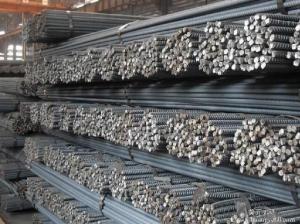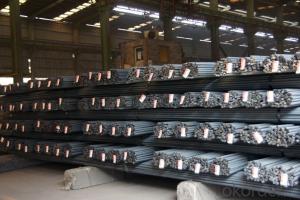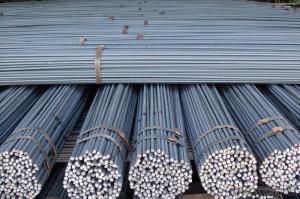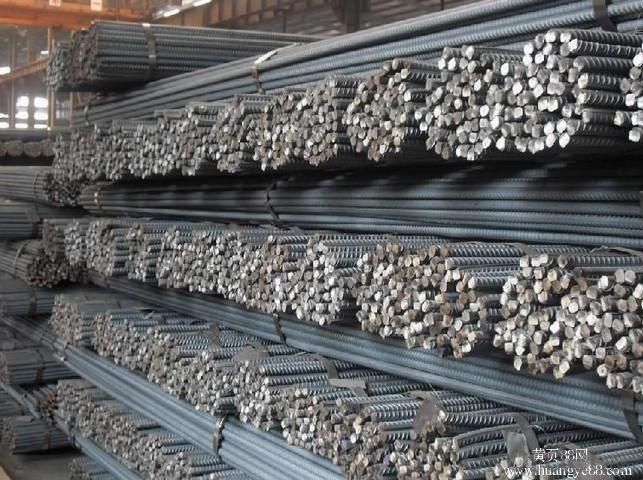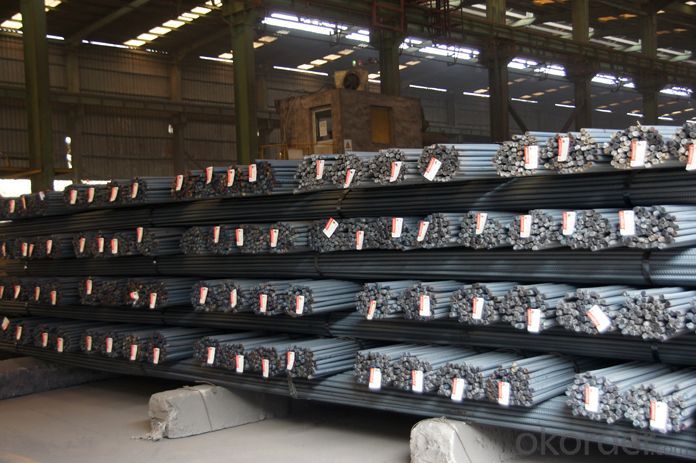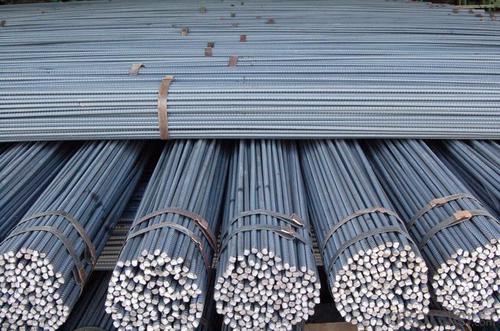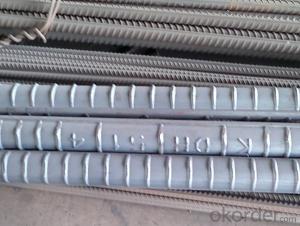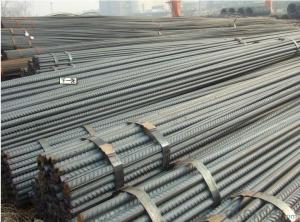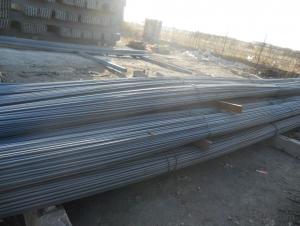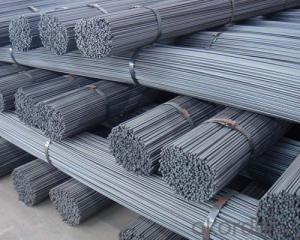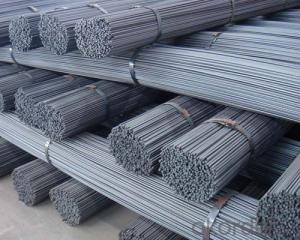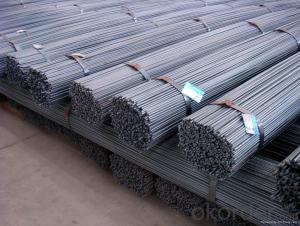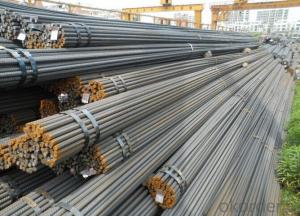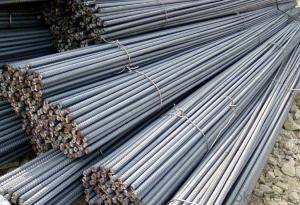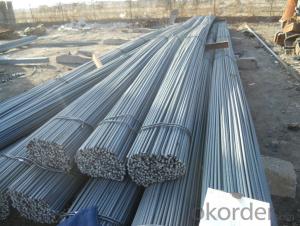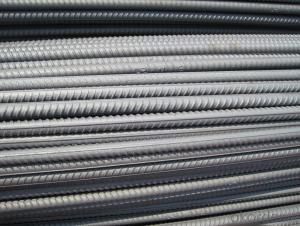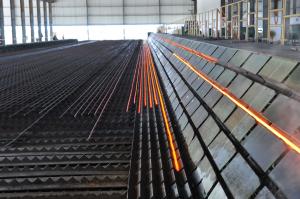High quality deformed bars with grade HRB400
- Loading Port:
- Tianjin
- Payment Terms:
- TT OR LC
- Min Order Qty:
- 25 m.t.
- Supply Capability:
- 100000 m.t./month
OKorder Service Pledge
OKorder Financial Service
You Might Also Like
Product Description:
Specifications of HRB400 Deformed Steel Bar:
Standard | GB | HRB400 | |
Diameter | 10mm-32mm | ||
Length | 6M, 12M | ||
Place of origin | Hebei, China mainland | ||
Advantages | exact size, regular package, chemical and mechanical properties are stable. | ||
Type | Hot rolled deformed steel bar | ||
Chemical Composition: (Please kindly find our chemistry of our material based on HRB400 as below for your information)
Grade | Technical data of the original chemical composition (%) | ||||||
C | Mn | Si | S | P | V | ||
HRB400 | ≤0.25 | ≤1.60 | ≤0.80 | ≤0.045 | ≤0.045 | 0.04-0.12 | |
Physical capability | |||||||
Yield Strength (N/cm²) | Tensile Strength (N/cm²) | Elongation (%) | |||||
≥400 | ≥570 | ≥14 | |||||
Theoretical weight and section area of each diameter as below for your information:
Diameter(mm) | Section area (mm²) | Mass(kg/m) | Weight of 12m bar(kg) |
18 | 254.5 | 2.00 | 24 |
20 | 314.2 | 2.47 | 29.64 |
22 | 380.1 | 2.98 | 35.76 |
Usage and Applications of HRB400 Deformed Steel Bar:
Deformed bar is widely used in buildings, bridges, roads and other engineering construction. Big to highways, railways, bridges, culverts, tunnels, public facilities such as flood control, dam, small to housing construction, beam, column, wall and the foundation of the plate, deformed bar is an integral structure material. With the development of world economy and the vigorous development of infrastructure construction, real estate, the demand for deformed bar will be larger and larger..
Packaging & Delivery of HRB400 Deformed Steel Bar:
Packaging Detail: products are packed in bundle and then shipped by container or bulk vessel, deformed bar is usually naked strapping delivery, when storing, please pay attention to moisture proof. The performance of rust will produce adverse effect.
Each bundle weight: 2-3MT, or as required
Payment term: TT or L/C
Delivery Detail: within 45 days after received advanced payment or LC.
Label: to be specified by customer, generally, each bundle has 1-2 labels
Trade terms: FOB, CFR, CIF
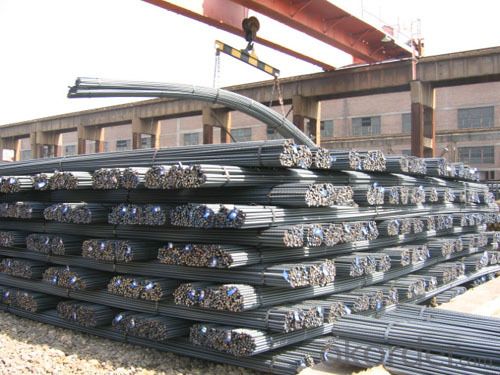

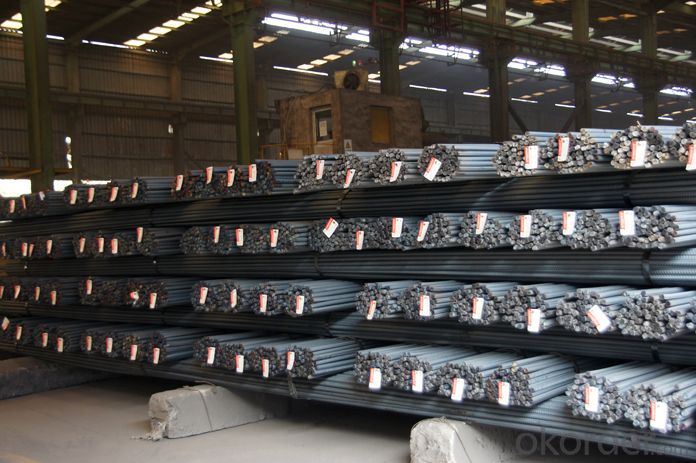
*If you would like to get our price, please inform us the size, standard/material and quantity. Thank you very much for your attention.
- Q: Can steel rebars be used in structures with high resistance to fire?
- Yes, steel rebars can be used in structures with high resistance to fire. Steel has a high melting point and excellent fire resistance properties, making it a suitable choice for reinforcing structures that need to withstand high temperatures and fire hazards.
- Q: How do steel rebars contribute to the load-bearing capacity of concrete slabs?
- Steel rebars contribute to the load-bearing capacity of concrete slabs by providing reinforcement and increasing the overall strength and durability of the structure. As concrete is strong in compression but weak in tension, steel rebars are embedded within the concrete to counteract tension forces. The rebars absorb and distribute the tensile stresses, preventing the concrete from cracking or failing under heavy loads. This combination of concrete and steel rebars creates a reinforced structure that can bear more weight and withstand various external forces, ensuring the integrity and safety of the concrete slab.
- Q: How are steel rebars protected against galvanic corrosion?
- Steel rebars are protected against galvanic corrosion through various methods such as applying epoxy coatings, using galvanizing techniques, or utilizing corrosion inhibitors. These protective measures create a barrier between the steel rebars and the corrosive environment, preventing galvanic corrosion from occurring.
- Q: What is the lifespan of steel rebars in a concrete structure?
- The lifespan of steel rebars in a concrete structure can vary depending on several factors such as the quality of the steel, the environment it is exposed to, and the level of maintenance. However, under normal conditions, steel rebars in a well-designed and properly constructed concrete structure can last for several decades, typically ranging from 50 to 100 years or more. Regular inspections, repairs, and proper protective measures can help extend their lifespan even further.
- Q: What are the different types of steel rebars available?
- There are several types of steel rebars available, including standard carbon steel rebars, epoxy-coated rebars, galvanized rebars, stainless steel rebars, and composite rebars.
- Q: What is the standard size of a steel rebar?
- The standard size of a steel rebar typically ranges from 6mm to 50mm in diameter.
- Q: How do steel rebars contribute to the overall safety of a structure?
- The overall safety of a structure is significantly enhanced by steel rebars in multiple ways. Firstly, concrete, which is brittle and prone to cracking under tension, is reinforced by steel rebars. By embedding steel rebars within the concrete, the structure gains increased tensile strength, enabling it to withstand greater loads and resist cracking or failure. Secondly, stress is distributed and dissipated throughout the structure with the help of steel rebars. When a load is applied to a structure, such as an earthquake or strong winds, internal forces are generated that need to be managed and dispersed. Steel rebars serve as an interconnected network of bars, transferring the load from one rebar to another, and ultimately to the foundation. This prevents localized stress concentrations and ensures that the structure can better withstand external forces. Moreover, the ductility of a structure is improved by steel rebars. Ductility refers to the ability of a material to deform without breaking. When a structure is subjected to extreme forces, such as seismic activity or high winds, it must be able to flex and absorb energy without collapsing. Steel rebars provide this ductility by elongating and deforming under stress, absorbing and dissipating energy before reaching a critical point of failure. This characteristic is crucial in protecting the overall integrity of the structure and ensuring the safety of its occupants. Furthermore, steel rebars also contribute to the long-term durability of a structure. Concrete is vulnerable to various environmental factors, including moisture, temperature fluctuations, and chemical exposure, which can cause deterioration and weakening over time. By reinforcing the concrete with steel rebars, the structure becomes more resistant to these factors, maintaining its strength and stability for an extended period. In conclusion, steel rebars are essential for ensuring the overall safety of a structure. They enhance the tensile strength of concrete, distribute stress, improve ductility, and increase the durability of the structure. By providing these crucial properties, steel rebars significantly reduce the risk of structural failure and safeguard the lives and well-being of individuals within the building.
- Q: Are steel rebars suitable for use in aggressive environments?
- Indeed suitable for use in aggressive environments are steel rebars. Commonly utilized in construction projects, particularly in reinforced concrete structures, steel rebars possess high tensile strength and durability. However, when exposed to corrosive elements like moisture, chloride ions, and chemicals, corrosion may occur, leading to weakened rebars and compromised structural integrity of the concrete. To counteract this issue, protective materials such as epoxy or zinc are often applied to steel rebars, creating a barrier against corrosion. Moreover, stainless steel rebars, with their superior corrosion resistance properties, are also employed in aggressive environments. In conclusion, although steel rebars generally prove suitable for aggressive environments, it is essential to consider specific conditions and implement appropriate protective measures to prevent corrosion and uphold the longevity of the reinforced concrete structure.
- Q: How do steel rebars prevent the concrete from cracking under tension?
- Steel rebars prevent concrete from cracking under tension by providing reinforcement and increasing the structural integrity of the concrete. When concrete is subjected to tensile forces, it tends to crack due to its low tensile strength. However, when steel rebars are embedded within the concrete, they act as a reinforcement by absorbing and distributing the tensile forces. The steel rebars, which are typically made of high-strength steel, have a much higher tensile strength compared to concrete. This means that when the concrete is subjected to tension, the rebars bear most of the load, preventing the concrete from cracking. The rebars act as a framework or skeleton within the concrete, resisting the tensile forces and ensuring the structural stability of the concrete. Moreover, the bond between the steel rebar and the concrete also contributes to preventing cracking under tension. The ribbed or deformed surface of the rebars enhances the bond with the surrounding concrete, creating a strong connection. This bond allows the rebars to transfer the tensile forces to the concrete matrix more effectively, reducing the risk of cracking. By reinforcing the concrete, steel rebars help to distribute the tensile forces more evenly throughout the structure. This prevents localized stress concentrations and minimizes the chances of cracks forming. Additionally, the presence of rebars can also help control crack propagation if cracks do occur, as they act as barriers that restrict the cracks from spreading further. In summary, steel rebars prevent concrete from cracking under tension by providing reinforcement and increasing the overall strength of the concrete structure. They bear the tensile forces, distribute them evenly, and enhance the bond between the rebar and the concrete. This reinforcement ensures the structural integrity of the concrete and helps prevent cracking.
- Q: Can steel rebars be used in high-strength concrete?
- Yes, steel rebars can be used in high-strength concrete. In fact, they are commonly used as reinforcement in high-strength concrete structures to enhance the overall strength and durability of the concrete.
Send your message to us
High quality deformed bars with grade HRB400
- Loading Port:
- Tianjin
- Payment Terms:
- TT OR LC
- Min Order Qty:
- 25 m.t.
- Supply Capability:
- 100000 m.t./month
OKorder Service Pledge
OKorder Financial Service
Similar products
Hot products
Hot Searches
Related keywords
